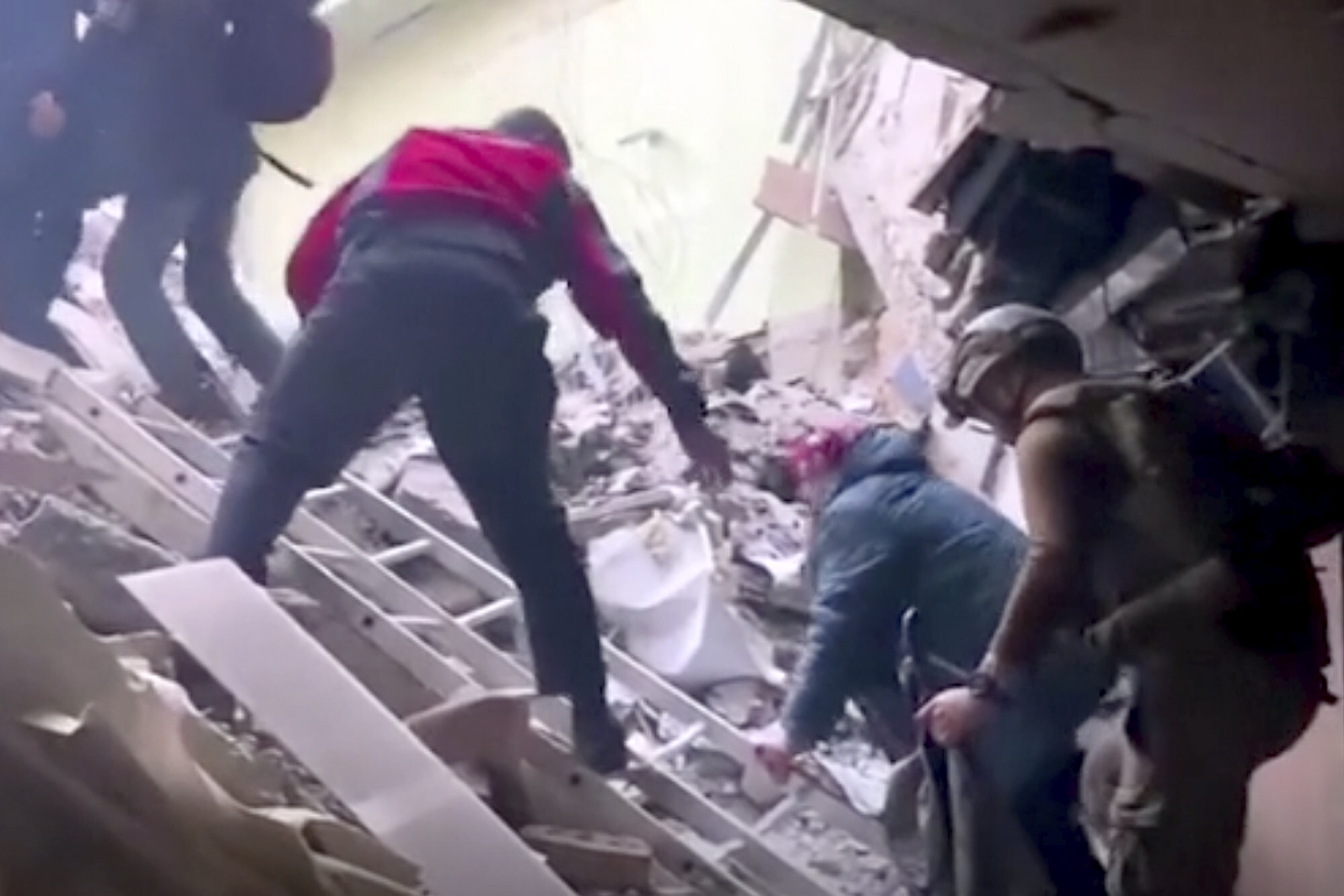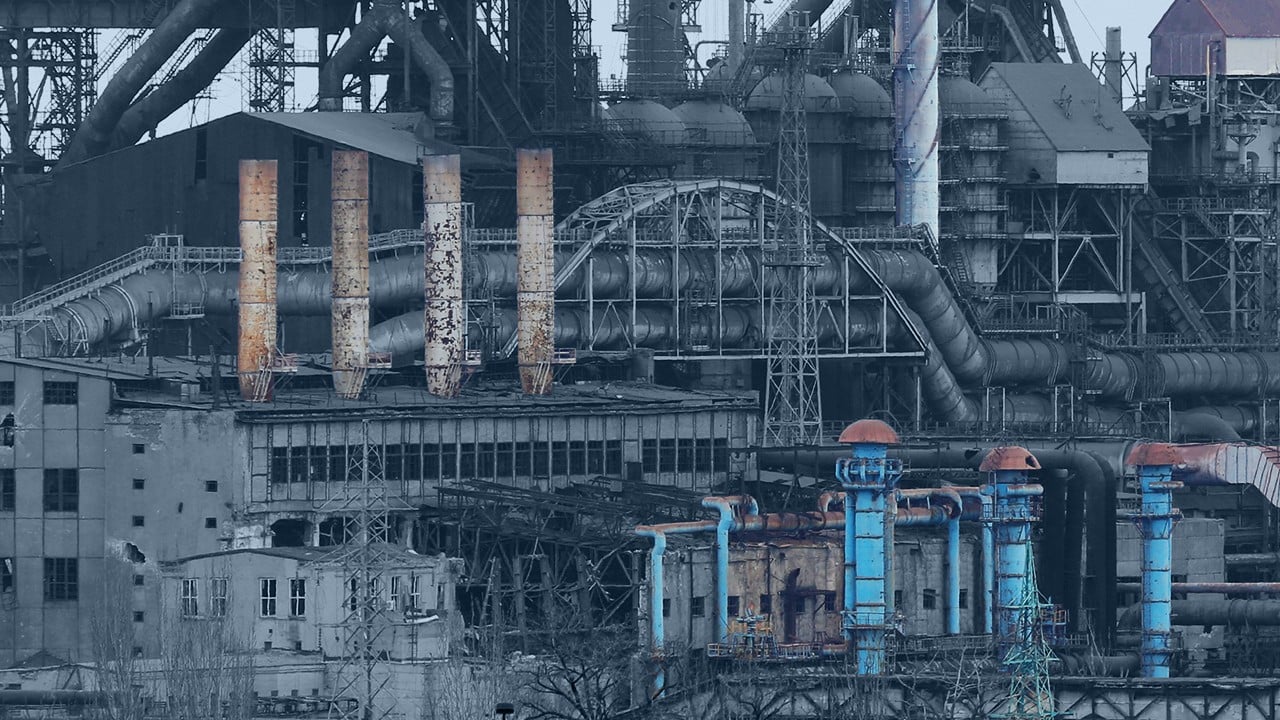
Ukraine war: First evacuees to leave Mariupol steel plant arrive safely after ordeal
- Some civilian evacuees reached Zaporizhzhia from Russian occupied territory on Monday morning after making their own way
- One convoy of civilians was delayed as buses had not reached the agreed pickup point as the city council urged the evacuees to remain in place
The first evacuees from the ruins of Mariupol’s Azovstal steel works were due to arrive in the Ukrainian-controlled city of Zaporizhzhia later on Monday after weeks of cowering from Russian shelling in underground bunkers.
The sprawling industrial complex in the Sea of Azov port city that has been devastated by weeks of Russian shelling has been a refuge for both civilians and Ukrainian troops as Moscow claimed control of Mariupol.
The United Nations and International Committee of the Red Cross began an operation coordinated with Ukraine and Russia on April 29 to bring out women, children and the elderly from the steel works.
Some civilian evacuees reached Zaporizhzhia from Russian occupied territory on Monday morning after making their own way.
One of them, Natalya Tsyntomirska, arrived in a funeral service van. She said she had left the devastation of Mariupol some time ago and been hiding in a basement in a nearby village.
“Our house is completely destroyed. We had a two-storey building, it’s not there anymore. It burned to the ground,” she said.

Another evacuee, Yelena Aytulova, 44, described sheltering in a bunker in Azovstal since February 24. She spoke at Bezimenne, in an area of Donetsk under the control of Russia-backed separatists on the route of the UN/Red Cross convoy.
“For a month we were eating – over 40 of us – six tins of food. We boiled two buckets of soup out of them and that was it for the whole day,” she said.
She said some civilians remained there after she left.
“The soldiers came and escorted the first 11 people out, those who were seriously ill, had asthma or needed insulin and also three of us, randomly. More than 40 people, including little children are left there.”
Your fight is a fight for everyone, Pelosi tells Zelensky during Kyiv visit
Olga Savina, 65, said her home in Mariupol had also been destroyed.
“It can’t be intact because there was bombing every day. All the time we spent in the bunker, they were bombing,” she said through tears.
Another convoy of civilians from the wider city was delayed as the buses had not reached the agreed pickup point, the city council said. Petro Andryushchenko, an aide to Mariupol’s mayor, had earlier reported they had already left. The council urged the evacuees to remain in place at the agreed pick-up point.
There was no indication of a plan to pull out the Ukrainian forces holed up at Azovstal. These are thought to include members of the Azov regiment, the national guard, marines, border guards and other units.
Another woman evacuated from the besieged Azovstal steel plant in Mariupol, Ukraine, described seeing sunlight for the first time in two months.
“We did not see any sunlight. We were scared,” factory worker Natalia Usmanova told reporters on Sunday. “I can’t believe it. Two months of darkness. When we were on the bus I told my husband ‘Vasya, won’t we have to go to the toilet with a flashlight?’”
She described fearing for her life while sheltering in the plant, as she said multiple shells struck the exit of the bomb shelter, making it difficult for her to breathe due to a lack of oxygen.
“When the shells started landing there I thought my heart would stop and I would not survive,” she said.
In the wake of the evacuation from the city’s steel plant, Russian forces resumed shelling there Sunday, according to one of the Ukrainian defenders.
Hero ‘Ghost of Kyiv’ fighter pilot is a myth, Ukraine admits
Denys Shlega, Commander of the 12th Operational Brigade of Ukraine’s National Guard, said in a televised interview that several hundred civilians remain trapped alongside nearly 500 wounded soldiers and “numerous” dead bodies. “Several dozen small children are still in the bunkers underneath the plant,” Shlega said.
Before the weekend evacuation, about 1,000 civilians were believed to be in the sprawling, Soviet-era steel plant, along with an estimated 2,000 Ukrainian fighters. As many as 100,000 people overall may still be in Mariupol, which had a pre-war population of more than 400,000.
On Monday, the Russian Defence Ministry said its forces struck dozens of military targets in eastern Ukraine in the past 24 hours, including concentrations of troops and weapons and an ammunition depot near Chervone in the Zaporizhzhia region, which lies west of the Donbas.

The information could not be independently verified. The Ukrainian president’s office said at least three people were killed and another seven, including a child, were wounded in the Donbas in the last 24 hours.
The regional administration in Zaporizhzhia said that at least two people died and another four were wounded in Russian shelling.
A full picture of battle unfolding in eastern Ukraine is hard to capture. The fighting makes it dangerous for reporters to move around, and both sides have introduced tight restrictions on reporting from the combat zone.
The attacks on the bridge followed a claim by a senior Russian military officer that Moscow aims to take control of the entire south of Ukraine and build a land corridor to Transnistria, a separatist region of Moldova where about 1,500 Russian troops are based.
Ukrainian and Western officials have voiced concern that Russia could use the region to open a new front in the war.


